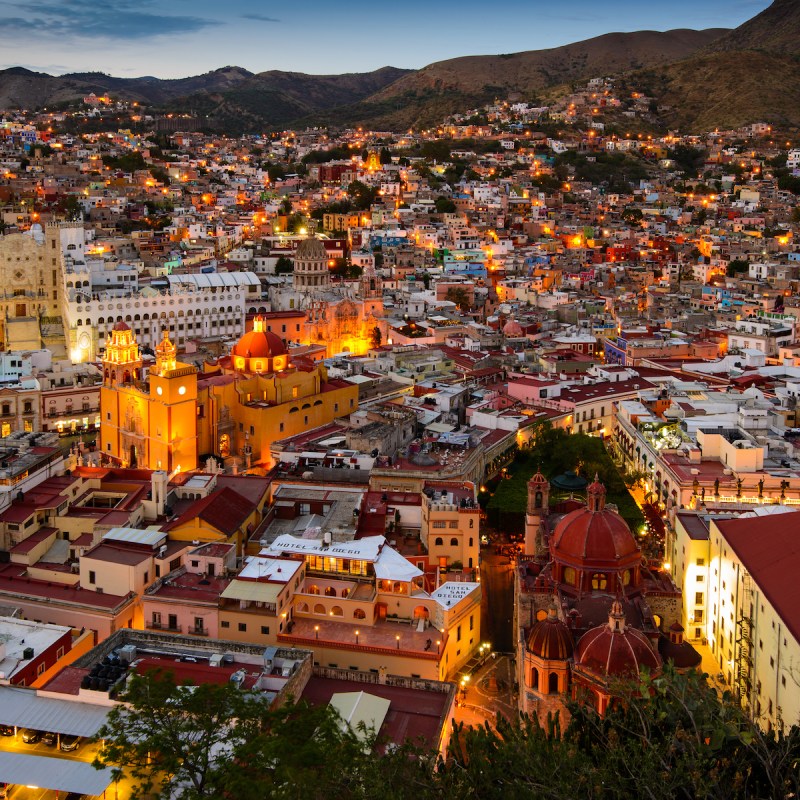
Some places in Mexico, including Cancun and Puerto Vallarta, are extremely popular destinations for Americans traveling during spring break and Easter.
Videos by TravelAwaits
The U.S. State Department, however, has issued a number of advisories for U.S. citizens traveling to various Mexican states in recent weeks. Now, as violent crime and kidnapping rates increase across Mexico, Americans considering travel to all but two of the states in Mexico should be aware of renewed and increasing warnings, the State Department cautions.
“Violent crime — such as homicide, kidnapping, carjacking, and robbery — is widespread and common in Mexico,” the State Department explains. “The U.S. government has limited ability to provide emergency services to U.S. citizens in many areas of Mexico, as travel by U.S. government employees to certain areas is prohibited or restricted. In many states, local emergency services are limited outside the state capital or major cities.”
Is Mexico Dangerous For Tourists?
While there are so many wonderful things about Mexico, drug cartels and violent crime have crept back into the news in recent years. This is why a lot of people are concerned for their safety in Mexico when planning a trip.
In general, Mexican drug cartels do not want to harm American tourists, but it is also true that the armed groups operate independently. If you visit popular tourist destinations, it is very common to be offered illegal drugs by a passerby. You should always say no, as these individuals are almost always connected to a major drug cartel.
Foreigners have a negative idea about how dangerous Mexico is because the U.S. State Department has high standards when it comes to risk aversion, and their travel warnings regarding Mexico may sometimes seem like fear-mongering. However, this doesn’t apply to places in Mexico that are truly dangerous and should be avoided.
American citizens, as well as Europeans, Canadians, and other tourists outside of Latin America, are generally very safe in Mexico so long as they don’t seek out illegal activities. Sought-after tourist destinations are generally not among the riskiest areas in Mexico.
Places to Avoid in Mexico According to The U.S. State Department
Here are the State Department’s recommendations for U.S. citizens considering travel to Mexico.
Do Not Travel To
The State Department recommends U.S. citizens not to travel to five states in Mexico due to increasing levels of crime and kidnapping.
Those states are Colima (where Manzanillo is located), Michoacan, Sinaloa (where Mazatlán is located), Tamaulipas, and Zacatecas (home to Zacatecas City).
Guerrero — where Acapulco, Zihuatanejo, and Ixtapa are located — is also on the State Department’s “Do not travel” list because crime is widespread in those areas.
Reconsider Travel To
The State Department recommends U.S. citizens reconsider travel to five states in Mexico due to crime and kidnapping.
Those states are Baja California (where Tijuana is located), Chihuahua, Guanajuato (where Guanajuato City is located), Jalisco state (home to Guadalajara and Puerto Vallarta), and Sonora.
The states of Durango and Morelos are also on the State Department’s “Reconsider travel” list due to high crime rates.
Exercise Increased Caution When Traveling To
The State Department recommends U.S. citizens exercise increased caution when traveling to 17 areas of Mexico, primarily due to crime rates but also the threat of kidnapping in some places.
Those states are Aguascalientes, Baja California Sur (where Cabo San Lucas, San Jose del Cabo, and La Paz are located), Chiapas, Coahuila, Hidalgo, Mexico State, Nayarit, Nuevo Leon, Oaxaca (home of Oaxaca City and Huatulco), Puebla, Queretaro, Quintana Roo (where Cancun, Cozumel, Tulum, and Riviera Maya are located), San Luis Potosi, Tabasco, Tlaxcala, and Veracruz.
Mexico City is also on the list due to high crime rates.
Exercise Normal Precautions When Traveling To
The State Department recommends U.S. citizens exercise normal precautions when traveling to Campeche and Yucatan, where Chichen Itza and Merida are located.
Know Before You Go
If you decide to travel to Mexico, the State Department offers some guidance.
“Exercise increased caution when visiting local bars, nightclubs, and casinos,” the State Department recommends. “Do not display signs of wealth, such as wearing expensive watches or jewelry. Be extra vigilant when visiting banks or ATMs.”
The State Department also recommends that travelers in Mexico keep both traveling companions and friends or family at home up to date about their travel plans.
Finally, if you are alone and take a taxi or Uber, be sure to take a photo of the taxi number and/or its license plate and text it to a friend or family member, the State Department recommends, especially if you’re a woman. Mexico is considered one of the five most dangerous countries for women.
You can find a detailed explanation of the threats in each state in Mexico and learn more about being safe while traveling within Mexico in the State Department’s Mexico Travel Advisory.
FAQs
What Are Mexico’s Most Dangerous Cities?
The most dangerous places in Mexico are Tijuana and Acapulco, followed by Ciudad Victoria and
Ciudad Juarez in the third place. Mexico’s northern border and Central Mexico are among the least safe places in Mexico. Tijuana is even considered the most dangerous city worldwide.
Are Popular Tourist Destinations in Mexico Dangerous?
Major tourist areas popular with American tourists like San Miguel de Allende or the coastal city of Mazatlan are typically not among the most dangerous places in Mexico. However, criminal activity can occur in otherwise safe tourist zones in the southern region as well, so you better exercise caution.
Are Beaches in Mexico Safe?
The most popular beaches in Mexico such as Playa del Carmen are considered low-risk. Reports of gang activity and cartel-related violence in the media are scaring the public away, but Washington and Mexican authorities are ensuring that policing standards stay high in popular destinations.
Is the Mexican Government Doing Enough to Counter the Organized Crime?
Mexican authorities claim to be doing all that they can to combat organized crime, and many local authorities are. However, with crime rates high and prosecutions low, people’s confidence in the state and its institutions is waning further.
Is Mexico City Dangerous for Tourists?
While Mexico City has areas with safety concerns, many tourist areas are generally safe. Exercise caution, stay in well-traveled areas, and follow local advice. Take usual precautions, and enjoy the rich cultural offerings and Mexico City historical sites.
How Can I Stay Safe in Mexico?
Mexican drug cartels do not want to harm tourists but you should exercise extreme caution anyway. Reconsider your need to travel to violent cities and remote areas as criminal groups frequently maintain roadblocks. Also, use ATMs in public spaces and during the daytime.
